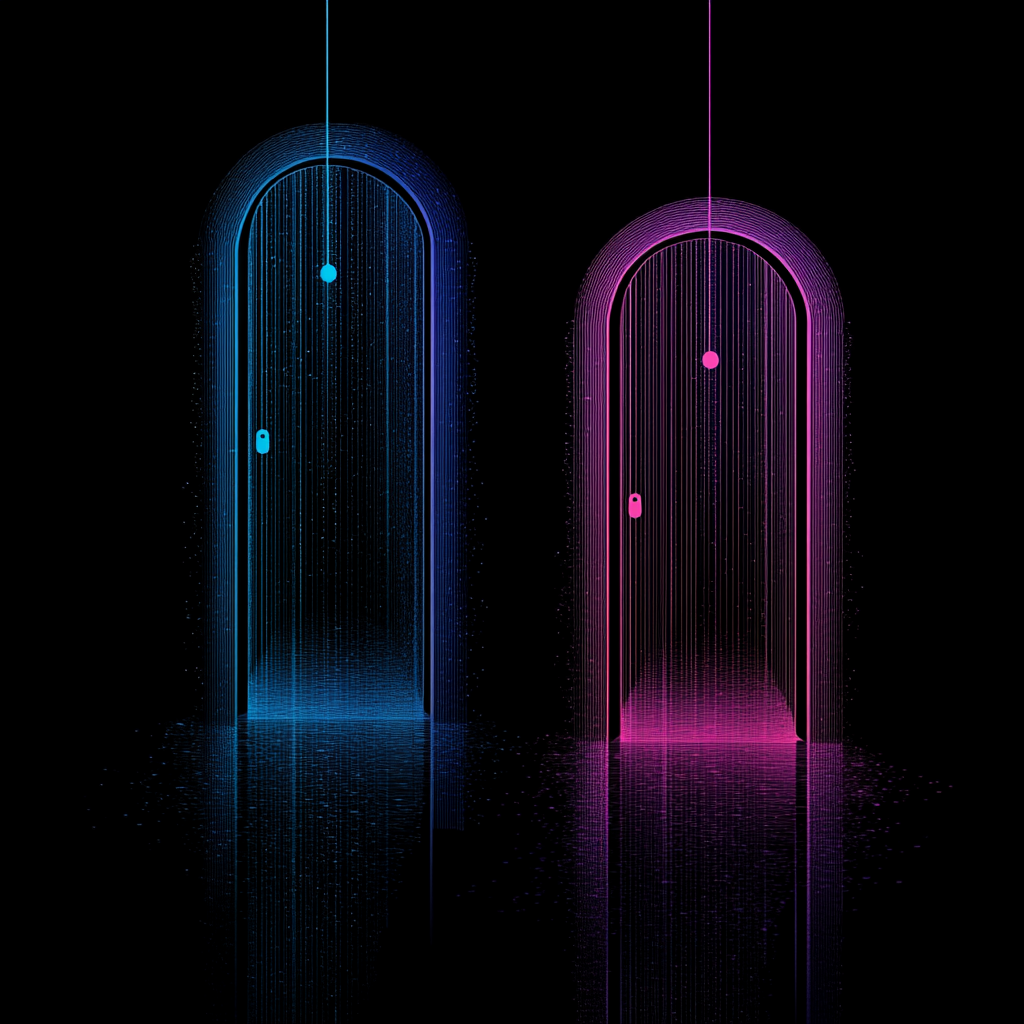The Myth of Multiplying Yourself
Sometimes the things that once made sense deserve another look.

Two doors, one room. It looks like choice, but both lead to the same place.
It’s common to see the same app appear twice in the store. Two icons, two listings, one underlying experience.
Duplication rarely begins as folly. It usually starts as caution. Someone suggests a second listing to reach another audience or improve discoverability. On paper, it sounds clever: two routes into the same experience, each tuned for its own screenshots and keywords. One invites you to play, the other to explore. Twice the entry points, twice the visibility.
For a while, it works. The listings are neat. Each tells a tidy story. But over time, the split becomes a drag. What began as precision starts to look like noise.
App stores reward momentum, not multiplication. Every listing competes not just with the market, but with its twin. Downloads, reviews, conversion rates, and retention are treated as separate signals. One app’s strength does not help the other. The stronger listing might pull ahead, or perhaps neither gathers enough energy to break the surface. Two halves of the same idea treading water, never reaching the critical mass that pushes a single app into real visibility.
The algorithm doesn’t care about intent; it cares about coherence. When engagement splits, authority never compounds. Both listings sit in the middle ranks, healthy enough to exist but too diluted to rise.
Two listings mean double the metadata, double the screenshots, double the privacy manifests, and double the review responses. Each small edit becomes a project. Every keyword change must be mirrored. Even ratings diverge, giving players two stories that do not align.
Technically, the symmetry creates friction. Universal Links and Android App Links are designed for one destination per URL. When two apps claim the same routes, both iOS and Android start to guess. Sometimes the link opens one app, sometimes the other, sometimes neither. To fix it, teams carve exceptions and invent subdomains, reintroducing complexity we once removed.
The truth is that deep links are literal. They are promises that one address equals one experience. Break that, and every layer above it — push campaigns, affiliate traffic, cross-navigation — starts to lose trust. What was built to sharpen discovery ends up dulling reliability.
Players don’t think in listings. They think in moments. Two icons that open the same thing create a question that doesn’t need asking. And if those icons exist only to drop you into different sections of the same app, it is worth asking something else: why can’t the app just remember where you left off?
State is cheaper than structure. You can build an experience that reopens exactly where a player last was without fragmenting the store. If context is the reason for duplication, persistence is the cleaner fix. The best entry point is not a second listing, it is continuity.
Apple’s ecosystem no longer needs structural workarounds to reach distinct audiences. Custom Product Pages let you create up to 35 tailored storefronts, each with its own visuals and message, all feeding one source of truth. A campaign about matchday odds can open on a sports-themed page, another about free spins can highlight casino content, and both still contribute to a single ranking signal.
Product Page Optimisation adds built-in testing for icons, taglines, and screenshots. Results roll into App Analytics automatically. Winning variants can go live instantly, without duplicating the listing or splitting your data.
Apple’s In-App Events surface live campaigns and promotions directly in search results and on the Today tab. They add freshness to your presence and show Apple that the app is active and evolving.
On Android, the same pattern is now possible. Play Store Experiments and Custom Store Listings make it easy to test and tailor without cloning. One listing can adapt to audiences, regions, and acquisition channels. Segmentation has moved from structure to content. You can still talk differently to different people; you just no longer need a different app to do it.
Modern app stores reward clarity. Every click, install, and review feeds a single model. The stronger and more consistent that signal, the more confidently the system can rank, recommend, and feature you.
Two identical apps might once have been the smart move. Now they mostly show how long old logic can linger.
In product, as in presence, every split comes at a cost. Dilution hides more than duplication ever reveals.




